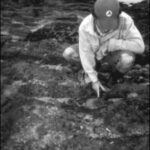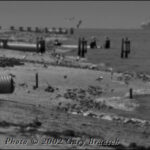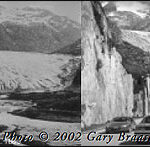
Reporting on the INS
Journalists who devote considerable time to coverage of immigration and investigation of the Immigration and Naturalization Service (INS) write about why they report on a topic that rarely makes Page One. They also share experiences in how they’ve reported these stories, especially in the wake of the terrorist attacks. Arguably, this is one of the more difficult beats given the secrecy with which the INS guards much of what it does—a secrecy that some news organizations are now challenging on constitutional grounds. – Melissa Ludtke, Editor
RELATED ARTICLE
"Using a Camera to Document Global Warming"
- Gary BraaschWhen I began my project, “World View of Global Warming,” glaciers presented another very visible indication of climate change. Throughout the 20th century, glaciers in the temperate and tropical zones have been shrinking. Because scientists and photographers have been attracted to glaciers since the 19th century, there is informal documentation of what this ice has looked like through the years.
Finding usable “before” images can be tough given the many gaps in the record of dates and circumstances of historic pictures. Locating the previous photographers’ viewpoints can be very difficult: Many were not recorded or were on trails long since blasted away for highways. I first tried this in Peru in 1999. With directions from Andean glaciologist Alcides Ames of Huaraz and clutching a copy of the previous photograph in my gloved hand for constant comparison, it took long days of scrambling on rugged ridges above 15,000 feet to reach the points where other photographers apparently once stood. The change in the glaciers is very obvious even before one finds the matching view to create a set of convincing images.
Perhaps the most dramatic glacier withdrawal that can be seen in my comparative photographs is based on an 1859 photo and etching of the Rhone glacier in the Bernese Öberland, Switzerland. Back then, ice filled the valley right to the tiny crossroads of Gletch. By 2001, modern highways replaced the trail, and the glacier was nearly out of sight, 2.5 km distant and 450 meters higher. I’ve since found images from the 1930’s that provide more details about the glacier’s retreat.
University of Colorado glaciologist Mark Meier has published frequent reports of worldwide glacier recession and its effect on sea level rise. In 2002, he calculated that glacier melting could contribute 0.65 feet or more to the sea level during this century, and sea level is already about six inches higher than it was 100 years ago. The rate of rise is increasing as warming seawater expands. Early in this century the estimated rate of increase might be enough to inundate low-lying areas in the Pacific Islands, Bangladesh, the Everglades, and coastal zones in Florida and along the Atlantic coast. My photograph of a normal high tide on Delaware Bay shows the tiny area that remains for migrating shorebirds to forage for horseshoe crab eggs before being forced up against storm sewer outfalls near Cape May, New Jersey. This feeding situation now is added to other environmental obstacles confronting roughly one million sandpipers, red knots, and turnstones on their migratory flight from South America to the Arctic.
In California, marine biologist Rafe Sagarin of the University of California at Santa Cruz found that some tide pool habitat had changed when he revisited a 60-year-old study at Hopkins Marine Laboratory at Monterey, California. Summer sea temperatures have risen more than one degree during that time, and his new survey showed many warm-water tide pool animals had increased while those favoring colder water had decreased. These changes in small animals are harbingers of shifts that are likely to affect coastal life, including that of humans.






